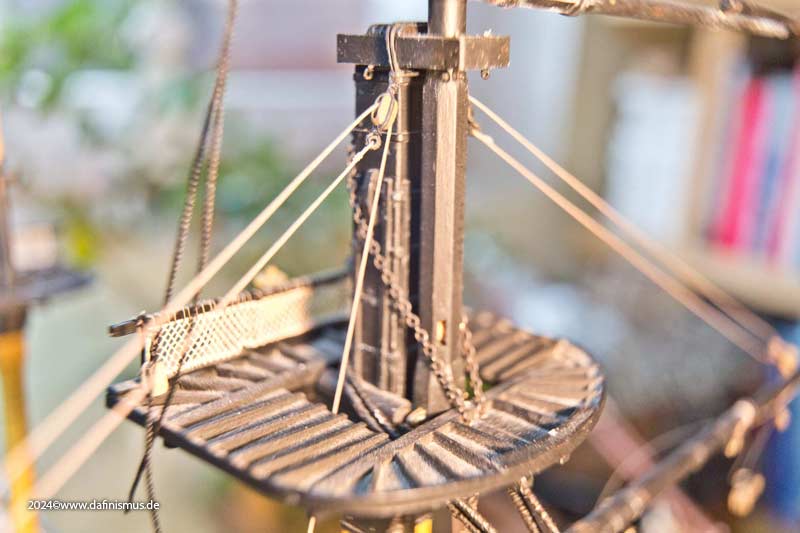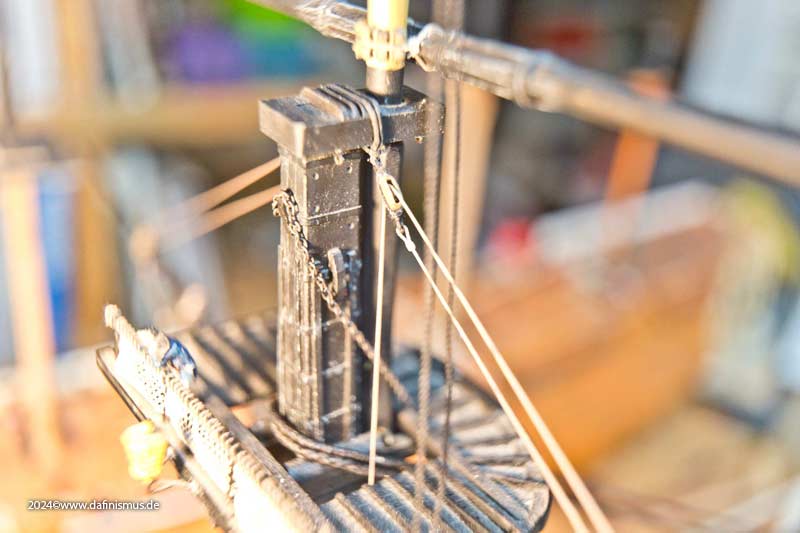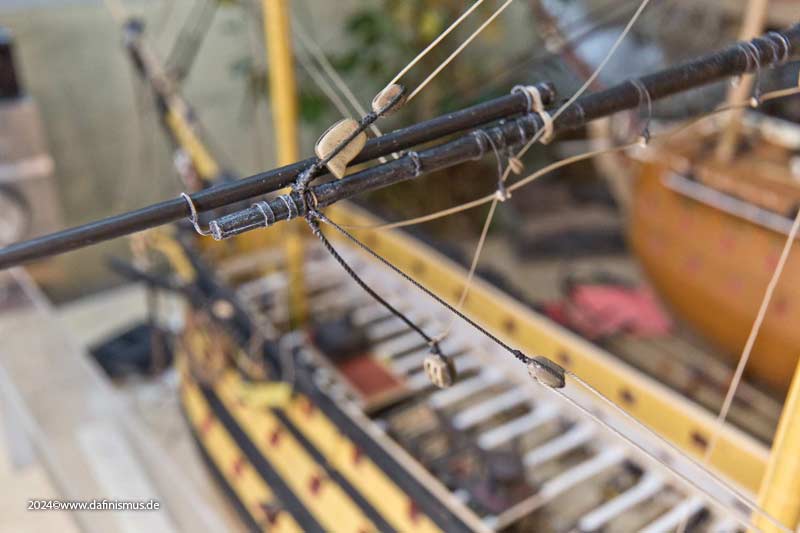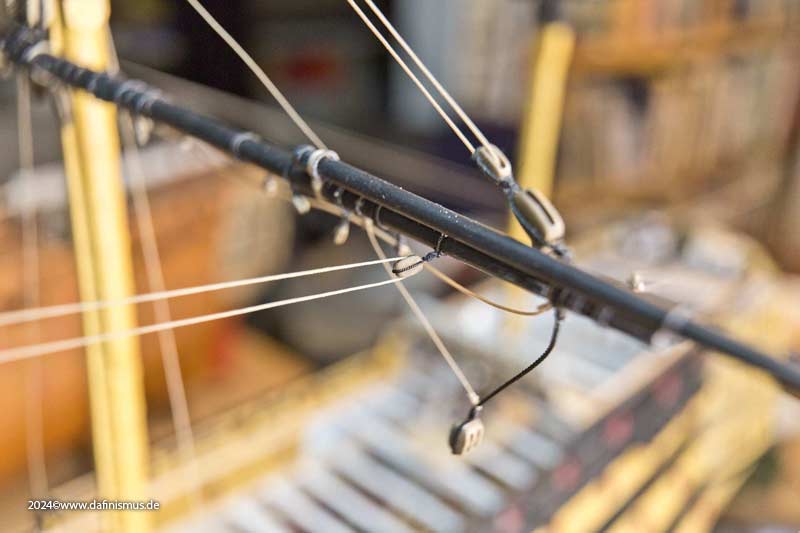I was most surprised by the stirrups: 3 feet below the yard.
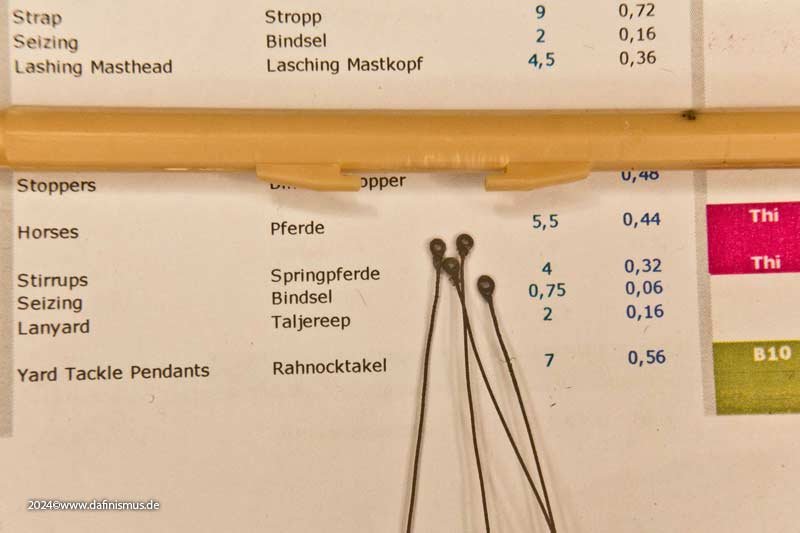
When I held my scale seaman next to it, my suspicions were confirmed: damn deep ...
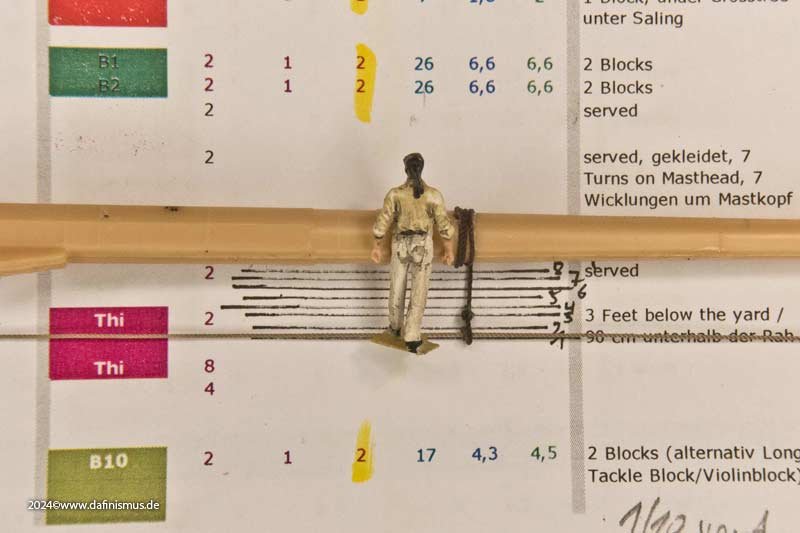
... I would have instinctively hung it 4 mm higher so that my little Able Seaman had a chance of getting over it.
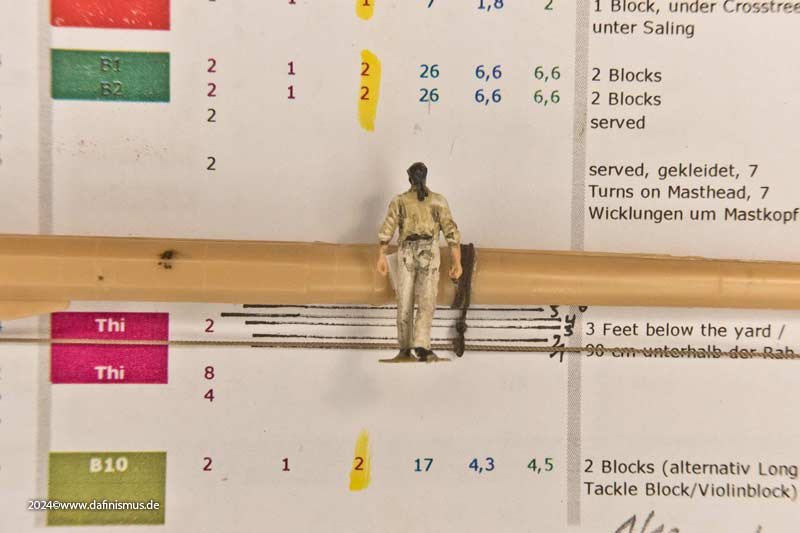
If you add up the 90 cm, the thickness of the yard is up to 60 cm, as in the case of the main yard. That's 150 cm, just under my chin. Then there is also the depth of the yard to consider, so that in addition to the 90 cm length under the yard, there is also approx. 0.5 x the diameter of the yard. Another escalating factor is that the horse can sag quite a bit in the middle between two stirrups.
To be able to judge this better, I trained two Able Seamen, one for the thickest part of the big yard with a diameter of 60 cm and one for the yardarm with a diameter of 30 cm.
First the variant with 3 feet under the yard. The sailor on the thick yard has very bad cards. The tar jacket on the thin end fits better.
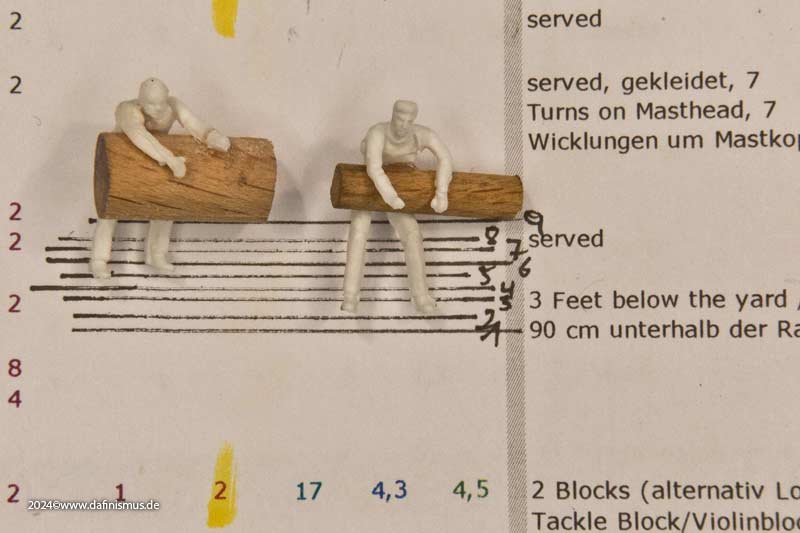
If I refer the 3 feet to the center of the yard, it's better.
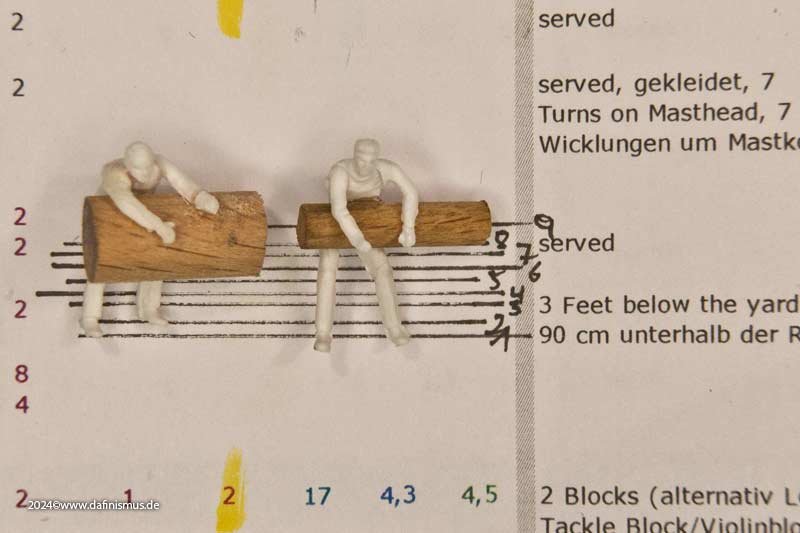
If you relate the 90 cm to the upper edge of the yard, it fits best. Here the sailor has the opportunity to use the horses at the thick point, the colleague on the outside still hangs at a similar height.
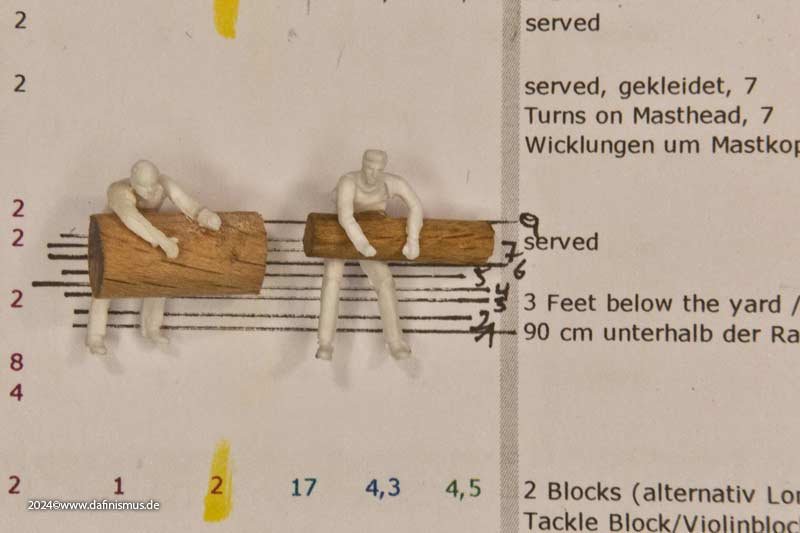
To confirm this interpretation of Steel's specification I had a closer look from the side.

The red part of the stirrups is about 3 Feet and it looks perfect both for the simply standing on it as for the working in a upswung position.
If one takes the other descriptions the remarks to the simplyfied "3 feet underneath the yard" it would possibly read like this:
Stirrup long 3 Feet, nailed to the top of the yard, with enough overlength to do 3 turns around the yard. Hangs behind and underneath the yard.
XXXDAn










